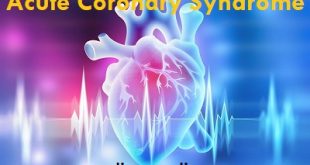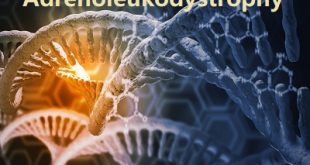Overview of acute lymphocytic leukemia (ALL)
Acute lymphocytic leukemia (ALL) is a type of cancer of the blood and bone marrow — the spongy tissue inside bones where blood cells are made.
The word “acute” in acute lymphocytic leukemia comes from the fact that the disease progresses rapidly and creates immature blood cells, rather than mature ones. The word “lymphocytic” in acute lymphocytic leukemia refers to the white blood cells called lymphocytes, which ALL affects. Acute lymphocytic leukemia is also known as acute lymphoblastic leukemia.
Acute lymphocytic leukemia is the most common type of cancer in children, and treatments result in a good chance for a cure. Acute lymphocytic leukemia can also occur in adults, though the chance of a cure is greatly reduced.
Pathophysiology
The malignant cells of acute lymphoblastic leukemia (ALL) are lymphoid precursor cells (ie, lymphoblasts) that are arrested in an early stage of development. This arrest is caused by an abnormal expression of genes, often as a result of chromosomal translocations or abnormalities of chromosome number.
These aberrant lymphoblasts proliferate, reducing the number of the normal marrow elements that produce other blood cell lines (red blood cells, platelets, and neutrophils). Consequently, anemia, thrombocytopenia, and neutropenia occur, although typically to a lesser degree than is seen in acute myeloid leukemia. Lymphoblasts can also infiltrate outside the marrow, particularly in the liver, spleen, and lymph nodes, resulting in enlargement of the latter organs.
Causes of acute lymphocytic leukemia
Acute lymphocytic leukaemia is caused by a DNA mutation in the stem cells causing too many white blood cells to be produced.
The white blood cells are also released from the bone marrow before they are mature and able to fight infection like fully developed white blood cells.
As the number of immature cells increases, the number of healthy red blood cells and platelets fall, and it’s this fall which causes many of the symptoms of leukemia.
It is not known exactly what causes this DNA mutation to occur, but there are a few factors which may increase the risk of developing acute lymphoblastic leukemia.
Risk factors of acute lymphocytic leukemia
Genetic disorders
A small number of childhood acute lymphoblastic leukemia cases are thought to be caused by related genetic disorders. For example, rates of leukemia tend to be higher in children with Down’s syndrome.
Radiation exposure
- Exposure to very high levels of radiation, either before birth or afterwards, is a known risk factor. However, it would require a significant level of radiation, such as the amount released during the nuclear reactor accident at Chernobyl.
- Due to the potential risk of radiation to unborn babies, medical techniques and equipment that use radiation, such as X-rays, are rarely used on pregnant women.
- Most cases of childhood leukemia occur in children with no history of genetic disorders or exposure to radiation.
Possible environmental factors
Experts have also carried out extensive research to determine whether the following environmental factors could be a trigger for leukemia:
- Living near a nuclear power station
- Living near a power line
- Living near a building or facility that releases electromagnetic radiation, such as a mobile phone mast
At the moment there is no evidence to confirm that any of these environmental factors increase the risk of developing leukemia.
Benzene
- Exposure to the chemical benzene is a known risk factor for adult acute leukemia. Benzene is found in petrol and is also used in the rubber industry. However, there are strict controls to protect people from prolonged exposure.
- Benzene is also found in cigarettes, which could explain why smokers are three times more likely to develop acute leukemia than non-smokers. People who have had chemotherapy and radiotherapy to treat earlier, unrelated cancers also have an increased risk of developing acute leukemia.
Other risk factors
There is some evidence to show an increased risk of acute lymphoblastic leukemia in people who:
- Are obese
- Have a weakened immune system – due to HIV or AIDS or taking immunosuppressants after an organ transplant
Symptoms of acute lymphocytic leukemia
Acute lymphocytic leukemia usually starts slowly before rapidly becoming severe as the number of immature white blood cells (blast cells) in your blood increases.
Most of the symptoms are caused by a lack of healthy blood cells. Symptoms include:
- Pale skin
- Feeling tired and breathless
- Repeated infections over a short time
- Unusual and frequent bleeding, such as bleeding gums or nosebleeds
- High temperature
- Night sweats
- Bone and joint pain
- Easily bruised skin
- Swollen lymph nodes (glands)
- Tummy (abdominal pain) – caused by a swollen liver or spleen
- Unintentional weight loss
- A purple skin rash (purpura)
In some cases, the affected cells can spread from your bloodstream into your central nervous system. This can cause neurological symptoms (related to the brain and nervous system), including:
- Headaches
- Seizures or fits
- Being sick
- Blurred vision
- Dizziness
Complications of acute lymphocytic leukemia
Weakened immune system
Having a weakened immune system (being immunocompromised) is a possible complication for some people with acute lymphoblastic leukemia.
A weakened immune system may be caused by a lack of healthy white blood cells, which means your immune system is less able to fight infection.
Bleeding
If you have acute leukaemia, you’ll bleed and bruise more easily because of the low levels of platelets (clot-forming cells) in your blood.
Infertility
Many of the medicines used to treat acute lymphoblastic leukaemia can cause infertility.
People who are particularly at risk of becoming permanently infertile are those who’ve received high doses of chemotherapy and radiotherapy in preparation for a stem cell and bone marrow transplant.
Psychological effects of leukaemia
Being diagnosed with leukaemia can be very distressing, particularly if a cure is unlikely. At first, the news may be difficult to take in.
It can be particularly difficult if you do not currently have any leukaemia symptoms, but you know that it could cause a serious problem later on. Having to wait many years to see how the leukaemia develops can be very stressful and can trigger feelings of anxiety and depression.
Diagnosis of acute lymphocytic leukemia
Diagnosing acute lymphoblastic leukemia (ALL) and your ALL subtype usually involves a series of tests. An accurate diagnosis of the subtype is important. The exact diagnosis helps the doctor
- Estimate how the disease will progress
- Determine the appropriate treatment.
Blood and Bone Marrow Tests
Complete Blood Count (CBC) with Differential. This test is used to measure the number of red blood cells, white blood cells and platelets in a sample of blood. It measures the amount of hemoglobin in the red blood cells.
Bone Marrow Aspiration and Biopsy. These two procedures are generally done at the same time in a doctor’s office or a hospital. For both procedures, the patient is given medication to numb the area, or given a general anesthesia. The samples are usually taken from the hip bone using specialized needles.
- A bone marrow aspiration removes a liquid marrow sample
- A bone marrow biopsy removes a small amount of bone filled with marrow
Cell Assessment. A hematopathologist will examine a sample of blood cells or bone marrow cells under the microscope to determine the size, shape, and type of cells as well as to identify other features of the cells. A significant finding is the appearance of the cells—whether the cells look more like normal, mature blood cells or more like abnormal, immature blood cells (blast cells).
Flow Cytometry. This laboratory test can detect specific types of cancer cells based on the antigens or proteins on the surface of the cells. The pattern of the surface proteins is called the “immunophenotype.” It is used to help diagnose specific types of leukemia and lymphoma cells. A bone marrow sample is often used for this test, but it can also be done with a blood sample.
Genetic Tests
The following tests are used to identify, examine and measure chromosomes and genes.
Cytogenetic Analysis (Karyotyping). In this test a hematopathologist uses a microscope to examine the chromosomes inside of cells. Karyotyping is used to look for abnormal changes in the chromosomes of the leukemia cells of patients with ALL.
- Cytogenetic testing is done using either a bone marrow or a blood sample. The leukemia cells in the sample are allowed to grow in the laboratory and then they are stained prior to examination. The stained sample is examined under a microscope and then photographed to show the arrangement of the chromosomes (the karyotype). The karyotype will show if there are any abnormal changes in the size, shape, structure or number of chromosomes in the leukemia cells.
- Cytogenetic analysis provides information that is important when determining a patient’s treatment options and prognosis. This information can predict how the disease will respond to therapy. For example, a translocation between chromosomes 9 and 22 is associated with a diagnosis of Philadelphia chromosome-positive (Ph+) ALL, a subtype of ALL that is treated differently than other subtypes.
Fluorescence in situ Hybridization (FISH). This is a cytogenetic laboratory technique that is used to identify and examine genes or chromosomes in cells and tissues. In cases of ALL, doctors use FISH to detect certain abnormal changes in the chromosomes and genes of leukemia cells.
Polymerase Chain Reaction (PCR). A PCR is a very sensitive laboratory technique that is used to detect and measure some genetic mutations and chromosomal changes that are too small to be seen with a microscope. Polymerase chain reaction testing essentially increases or “amplifies” small amounts of specific pieces of either RNA (ribonucleic acid) or DNA to make them easier to detect and measure. This test can find a single leukemia cell among more than 500,000 to one million normal cells. Polymerase chain reaction testing is one method used to determine the amount of minimal residual disease (MRD), the small amount of cancer cells left in the body after treatment. This testing can be done on a bone marrow or a blood sample.
Treatment for acute lymphoblastic leukaemia
Chemotherapy and drugs called steroids are the main treatments for ALL. The aim is to get rid of the leukaemia cells as quickly as possible, so your bone marrow can work normally again. This is called remission.
Treatment usually starts as soon as possible after diagnosis. Most people in the UK have treatment for ALL as part of research called clinical trials. Before you have any treatment, your doctor will explain the different treatments and their side effects. They will also talk to you about things to think about when making treatment decisions.
Treatments for acute lymphoblastic leukaemia (ALL) include:
- Steroids: Steroid drugs are almost always used to treat ALL.
- Chemotherapy: Chemotherapy uses anti-cancer (cytotoxic) drugs to destroy the leukaemia cells. This is the main treatment for ALL.
- Intrathecal chemotherapy: At times during treatment you will have chemotherapy given into the fluid around your spine and brain. This is called intrathecal chemotherapy.
- Tyrosine kinase inhibitors: If you have a type of ALL called Philadelphia positive ALL (Ph+ ALL), your treatment will include a drug called a tyrosine kinase inhibitor (TKI). I
- Stem cell transplant: An intensive treatment called a donor stem cell transplant is sometimes used as part of ALL treatment.
- Immunotherapy: Immunotherapy drugs use the body’s own immune system to recognise and destroy leukaemia cells. This type of treatment is not used very often to treat ALL.
Side effects of treatment
Leukaemia and its treatment can cause symptoms and side effects. Your doctor will monitor these and give you supportive treatment to prevent or manage them.
Tests during treatment
During treatment, your healthcare team will take blood, bone marrow and lumbar puncture samples to check for leukemia cells. The results of these tests help doctors:
- See how well your treatment has worked
- Make decisions about your next treatment
- See if the leukemia is more likely to come back.
If the tests show very small numbers of leukemia cells, or none at all, the doctor will say you are in remission. Sometimes very small numbers of leukemia cells are still found after chemotherapy. This is called minimal residual disease (MRD). It can affect the treatment you need to have.
Prevention of acute lymphocytic leukemia
There is no known way to prevent most cases of leukemia at this time. Most people who get acute lymphocytic leukemia have no known risk factors, so there is no way to prevent these leukemias from developing.
 Diseases Treatments Dictionary This is complete solution to read all diseases treatments Which covers Prevention, Causes, Symptoms, Medical Terms, Drugs, Prescription, Natural Remedies with cures and Treatments. Most of the common diseases were listed in names, split with categories.
Diseases Treatments Dictionary This is complete solution to read all diseases treatments Which covers Prevention, Causes, Symptoms, Medical Terms, Drugs, Prescription, Natural Remedies with cures and Treatments. Most of the common diseases were listed in names, split with categories.







